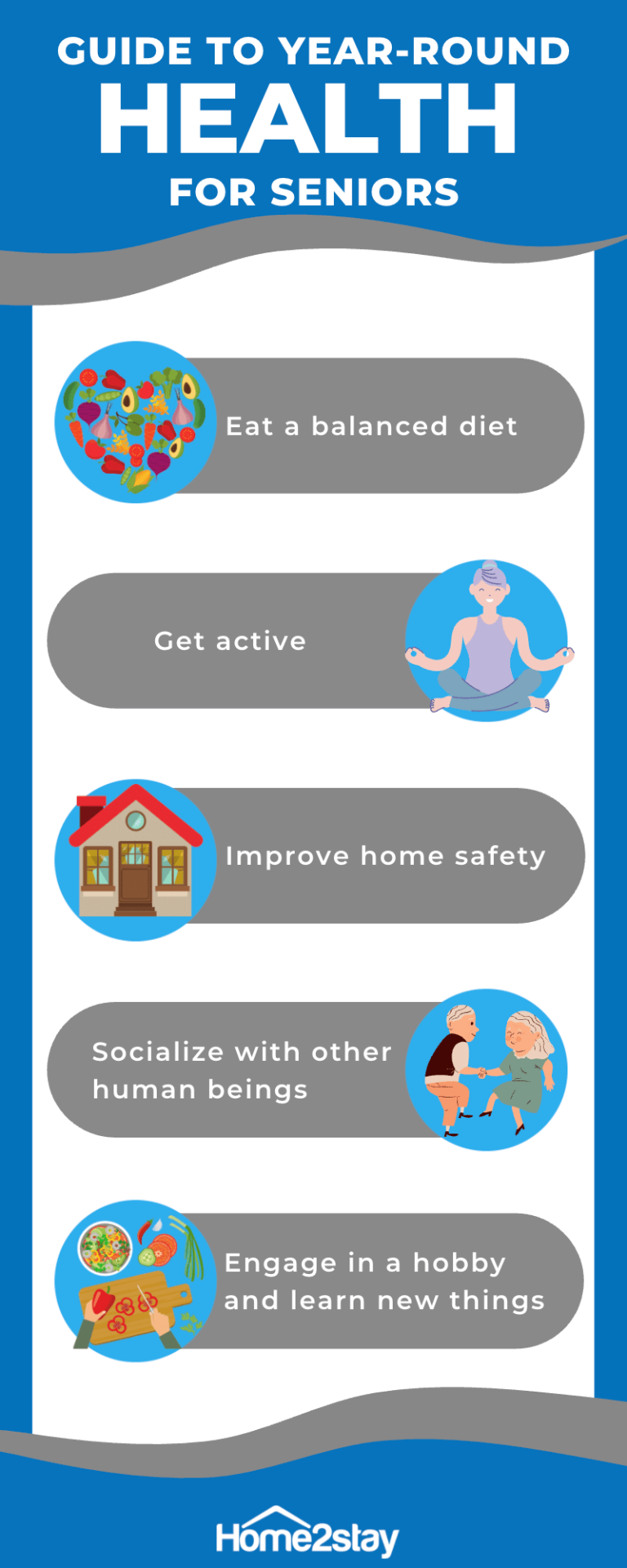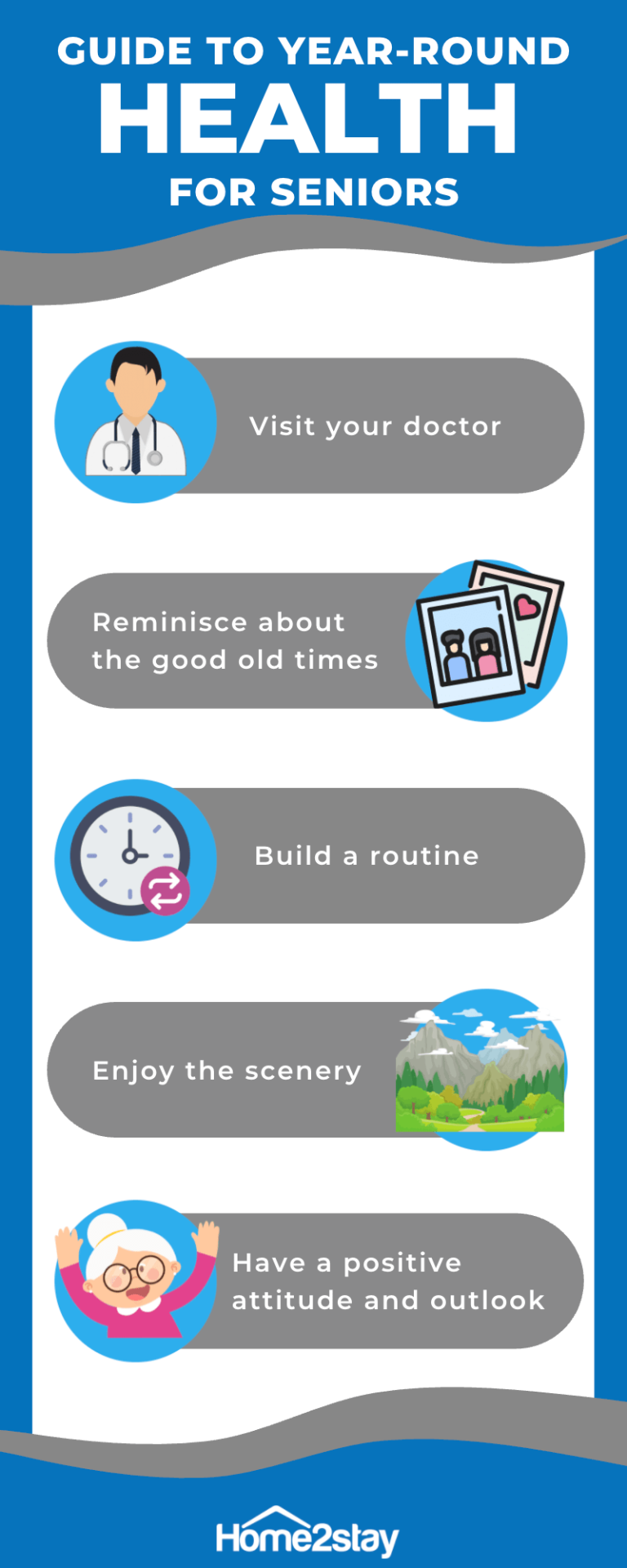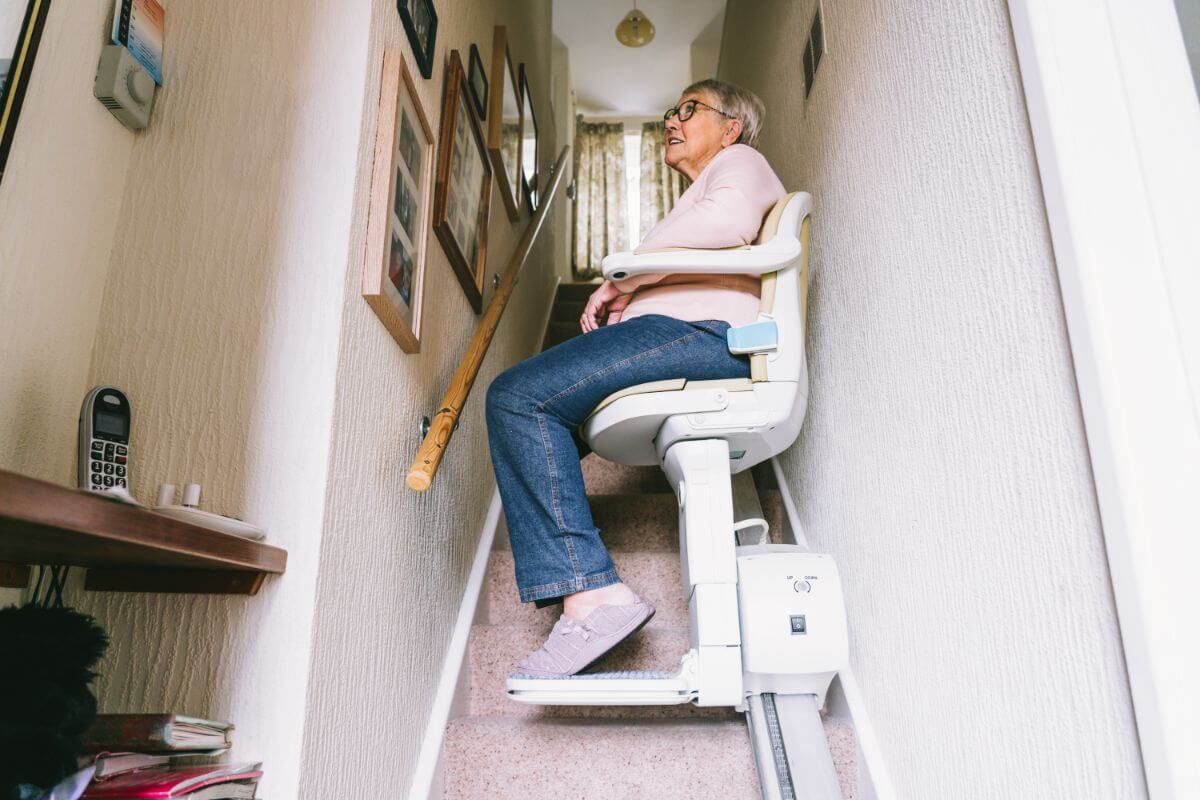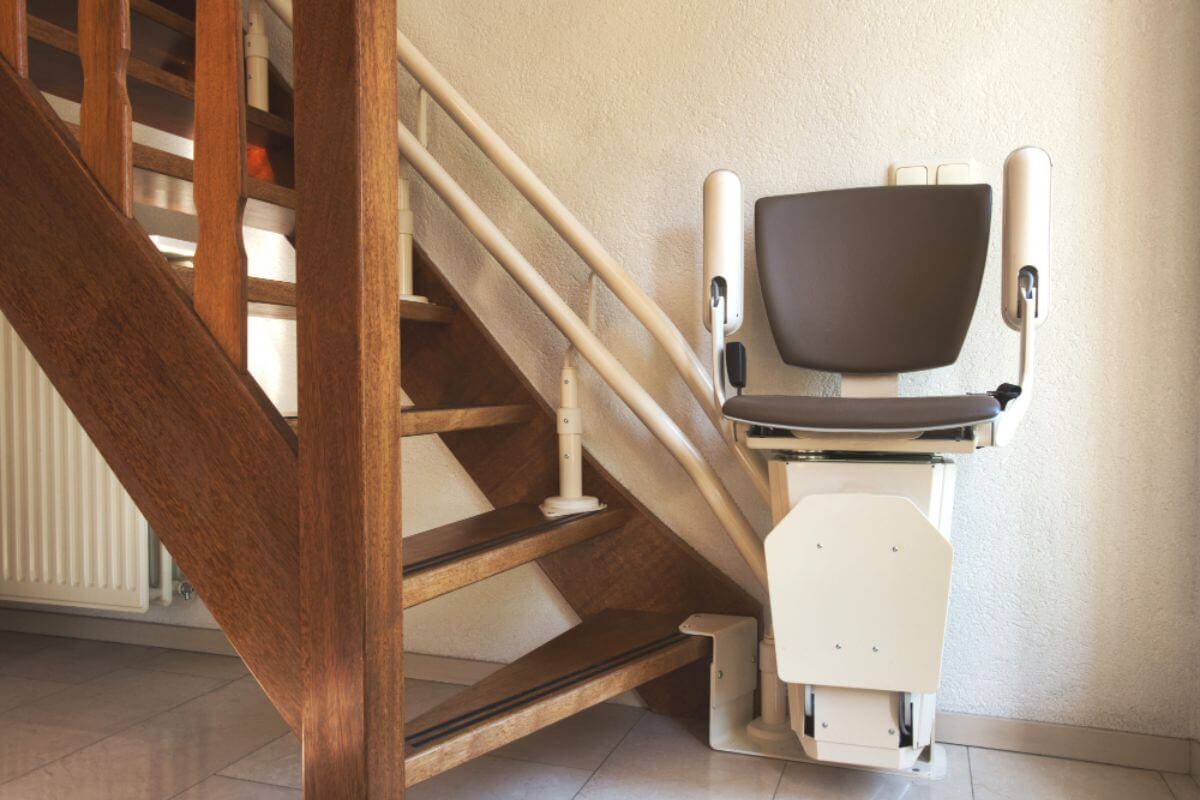The Complete Guide To Maintaining Senior’s Health For The Whole Year

Do you love making new year’s resolutions? Do you start each year promising yourself or your loved ones that this will be the year you achieve your fitness and health goals?
Committing and re-committing to your health is definitely one of the most popular resolutions globally, year after year. A 2021 survey revealed that 50% of the participants said they will exercise more and improve their fitness, 48% vowed to lose weight, while 39% responded that they will improve their diet.
When it comes to the baby boomer generation, 53% said they wanted to lose weight- however, they are also the least successful in keeping their resolution alive, with only 2% sticking to it.
Accept the aging process
One of the main reasons why people fail to hit their resolution or goals is because they may not be very realistic. Remember that there is no stopping the natural aging process- no matter how much you exercise, you cannot be a 60-year-old in a 30-year-old’s body.
As you get older, it’s normal that your body will not be as strong as it used to be. A flu or common cold can put you in bed for weeks, your aching joints and muscles can make it harder to move around, you start forgetting things, you lose your balance more often… These are all natural parts of aging.
But the good news is: with the right lifestyle changes, you can age gracefully. Technology, innovation, and improved accessibility to information have made it easier than ever to maintain better health and quality of life in your golden years.
So whether it’s the new year, the middle of the year, your birthday or just any other day, it’s never too late or too early to get started on building a healthier lifestyle.
These easy tips can help you stay healthy all year round- you can take it easy by incorporating one tip at a time, then adding another one the month after, or you can bravely tackle them all at the same time.
It’s all up to you. What’s important is you enjoy the journey.
10 tips to enjoy year-round health for older adults
1. Eat a balanced diet
Food fads come and go, but a balanced and healthy diet never goes out of style. It’s about getting the nutrients that your body needs.
According to the National Council on Aging, a healthy meal or plate should look like a rainbow, made up of the following:
- Lean protein- lean meats, preferably white meat or free-range choices, seafood, eggs and beans.
- Fruits and vegetables- look for a wide range of colors, like orange, red, green and purple.
- Whole grains- oatmeal, brown rice or whole wheat pasta
- Vitamin D sources- such as low-fat dairy or non-dairy alternatives such as soy milk, rice milk or almond milk. It is best to consume Vitamin D with foods that are high in calcium, because Vitamin D helps calcium get absorbed into the body more efficiently.
For seniors, it is important to limit sodium / salt, sugar, calories and cholesterol intake. Avoid trans fat and saturated fats (which are prevalent in processed food items, fried food, baked goods, deli meat, etc.) and go for healthy unsaturated fats (foods that contain good fats are fatty fish, seeds, nuts, avocado, chia seeds, etc.).
Your body composition changes as you age, and older adults have lower water content in their bodies- so it’s important to keep hydrated. Proper water intake is crucial to keep electrolytes and blood volume balanced, and for the proper functioning of the digestive system and the kidneys. Dehydration can also even lead to mental confusion and poor absorption of nutrients in the body.
The recommended daily fluid intake is 64 ounces or 8 glasses per day. Since the sensation of thirst diminishes for seniors, it is a good idea to jazz it up by adding lemon and fruit slices to encourage more frequent drinking (take note that coffee and tea are diuretics and should not be included in the liquid consumption count).
If drinking fluids is a challenge, it is recommended to include more water-rich foods, such as soups, stews, broths, cucumbers, watermelons, strawberries, lettuce, with every meal.
2. Get active
Harvard Medical School shared a report by the Lifestyle Interventions and Independence for Elders (LIFE), which conducted a trial of more than 1,600 men and women aged 70 to 89 years old, all of which did not exercise regularly and were relatively frail.
Half of them were randomly assigned to an exercise program and after two and a half years, the individuals in this group were found to be 28% less likely to have mobility issues (inability to walk about 400 yards without assistance) and were 18% less likely to have any episode of physical disability, compared to the other half.
Based on the results of the trial, starting an exercise program even at a more advanced age can improve mobility, balance and overall health. Better mobility and balance means maintaining independence and freedom of movement for older adults.
Remember to start gently- 10 minutes per day is a good start, then work it up to at least 150 minutes per week. Walking and other moderate intensity exercises, such as stretching, swimming, yoga or aerobics, are good options for older adults.
Resistance and strength training with weights or machines are good too, but make sure that you don’t do it two days in a row to allow your body ample time to recover.
3. Improve home safety
The Centers for Disease Control and Prevention (CDC) shared these frightening fall statistics among individuals aged 65 and above:
- One out of five falls lead to a serious injury such as broken bones or head injury
- Every year, 3 million seniors are brought to emergency rooms due to fall injuries
- More than 800,000 patients are hospitalized per year due to fall injuries, most often because of a head injury or hip fracture
- Falls are the most common cause of traumatic brain injuries and 95% of hip fractures
In short, falls for seniors are serious and costly.
The best antidote to falls is to prevent it altogether, and it starts by making your home safer and more accessible:
- Grab bars and handrails are your friends. Have them installed in key locations where senior family members frequently stay, most especially in bathrooms where the wet floor can lead to slips and falls, and along staircases and hallways.
For older adults with mobility challenges, a SuperPole, Advantage Rail or bed rail can help provide stability as they transition from a sitting to standing position and vice versa.
- Opt for non-slip mats or flooring for wet areas, such as in bathrooms, kitchen or porches.
- Up to 80% of home falls happen in the bathroom- so this is the most important area that you should fall-proof. Build a barrier-free bathroom by converting your bathtub into a walk-in tub or shower- tub cuts are usually simple to perform and can be done in a matter of hours.
A bath bench or chair allows individuals with mobility challenges to sit during a shower.
- 60% of accident-related deaths in seniors involve stairs or steps, and older adults over the age of 75 are five times more likely to get injured from a stair-related accident compared to younger people.
Seniors are especially vulnerable to staircase accidents, and the challenge of going up and down staircases is one major reason why many older individuals with mobility problems might opt to move out of their home.
You can convert your stairs into a safer area by having sturdy handrails installed, or invest in a stair lift or chairlift. When it comes to your porch, a ramp or a vertical platform lift are friendly tools for wheelchair users or those with limited mobility.
- Proper lighting is one of the most important and easiest ways to improve safety at home for seniors. The brighter the lights, the better- replace incandescent lights with LED lights, and choose white light over yellow light.
Always have a night light on in the bedroom or bathrooms, and make sure that light switches are easily accessible.
- Remove clutter and other safety hazards. Small objects, exposed cables, boxes, loose carpets and slippery rugs can all cause falls and slips that are completely preventable. Take a good look around your home and remove everything that can contribute to the risk of accidents and replace them with safer options.
4. Socialize / interact with other human beings
Loneliness can be fatal- increasing the risk for heart diseases by 29% and stroke by 32%. Studies also suggest that social isolation leads to a 30% more chance of dying in the next seven years.
No matter the age, humans are social beings who need to connect with others, in order to stay emotionally, mentally and physically fit. When seniors feel isolated, this can increase the risk of developing depression, anxiety, cognitive decline and illnesses.
Get involved in your community- Are there local clubs that you can join (safely)? Are there causes that you care about? Interacting with other human beings can help you feel more involved and give you a sense of belonging.
With modern technology, it is now easier to stay connected with others via social media, video calls or voice calls. Schedule a weekly call with friends and family, and you can also use social media to update everyone with what’s happening with you. There are different Facebook groups that cater to different interests and this is also a great way to meet new people.
Here are some ideas and organizations to help you stay socially connected in British Columbia: Social Connections.
5. Engage in a hobby / activity and learn new things
It is never too late to learn something new! Your senior years are actually a great time to engage in a new or long-forgotten hobby, as you now have more time on your hands to pursue your interests.
Doing new things can also keep you mentally alert and sharp, and renew your sense of purpose in life. Activities that require working with your hands, such as sewing, finger-painting, arts and crafts, gardening, playing a musical instrument can help improve fine motor skills.
Do you enjoy taking care of others? Adopting a pet can benefit you more than you realize.
Why don’t you make it your goal to learn something new every year? That will make each new year exciting and something to look forward to.
Enjoy these activities for seniors in British Columbia at a discount!
6. Visit your doctor
It is advisable to be proactive and go for regular check-up’s and screening tests as you get older. This ensures that illnesses are detected and addressed early, so you can stay in good shape for the years to come.
These are the medical tests and checks that you should get done annually, once you reach 60 years of age:
- Blood pressure checking
- Blood tests for lipids
- Colorectal cancer exam
- Vaccinations (flu, pneumonia, sinusitis, meningitis, shingles, endocarditis, pericarditis, inner ear infection)
- Eye exam
- Periodontal exam
- Hearing test
- Bone density scan
- Vitamin D test
- Thyroid-stimulating hormone screening
- Skin check
- Diabetes test
- Mammogram and pap smear (for women)
- Prostate cancer screening (for men)
7. Reminisce about the good old times
Remembering the past through the senses- sight, sounds, touch, smell, and taste- can improve psychological well-being and lower the risk of getting Alzheimer’s or dementia.
Reminiscing can be done by looking at old pictures, listening or singing old meaningful songs, or simply talking about past events and experiences.
How about turning it into a family project and using this chance to preserve family history by creating a scrapbook, compilation of stories, or a heritage cookbook with younger family members?
Apart from the mental and health benefits, a project like this can help bring family members closer together.
8. Build a routine
A consistent daily routine can reduce stress and anxiety, improve quality of sleep, and help people feel safe and secure.
Hebrew Senior Life, an affiliate of Harvard Medical School, gives six tips on how to create a successful daily routine:
- Align with nature
- Intentionally and mindfully begin and end your day
- Keep moving (engage in physical activities)
- Spend time outdoors
- Create and reflect on meaningful moments
- Restore and renew through small breaks
9. Take time to enjoy a change in scenery
Most older adults prefer staying indoors and at home, but your body is meant to benefit from the outdoors- fresh air, sunlight, the beauty and smell of nature.
Spending time outdoors can instantly lift your mood and ward off depression, give you your needed dose of Vitamin D, strengthen your immune system, improve longevity, encourage physical movement, and boost overall health.
When the season permits, get out of the house, even if it just means sitting on your front porch.
It is also a good idea to enjoy an annual vacation with your family and friends- a change in scenery that brings you out of your comfort zone can work wonders in improving confidence and overall physical and mental well-being.
10. It’s all in the attitude
Regardless of age, a positive attitude and outlook in life can go a long way in improving and maintaining your health.
With the wealth of experiences and challenges that seniors have gone through, studies found that older adults are more resilient towards stress compared to young adults- and this was apparent during the COVID-19 pandemic, with seniors reporting better mental health compared to the younger age group.
A positive attitude can help you cope with stress better, and can even improve longevity. So keep smiling and let’s make this year the best one yet!




So how do you choose which tip to follow first?
You can rate them from easiest to most challenging and choose to go from easiest to most difficult or vice versa. You can also draw lots randomly or plot in your calendar the schedule when you will start doing each tip.
Of course, if you are brave, you can do all these ten tips at the same time!
Do it with a buddy- whether young or old. No matter what, make it fun and just keep going!
Home2stay has been improving home safety and accessibility in the British Columbia region for almost ten years. Ready to embark on your safe home project this year? Give us a call!






Leave a Comment
We'd Love to Hear Your Thoughts Got something to say? We're all ears! Leave your comments below and let us know what you think. Your feedback helps us improve and serve you better. Can't wait to hear from you!